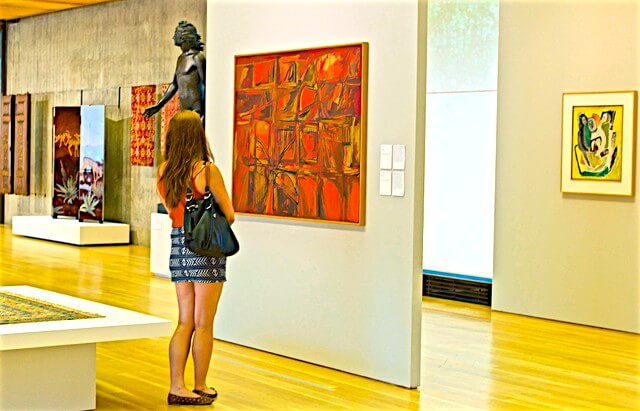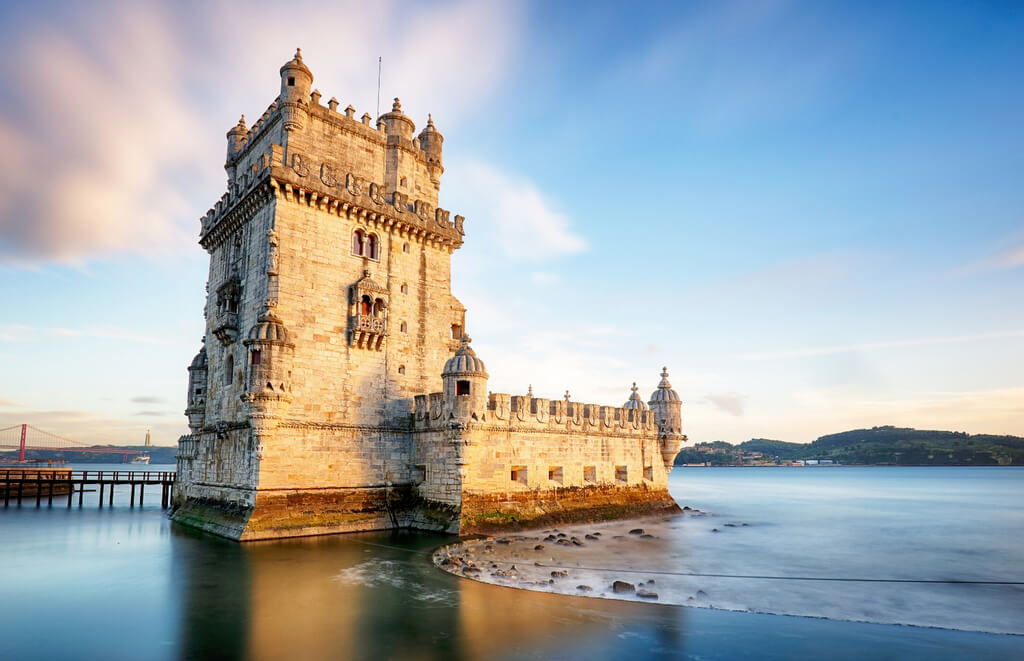The capital of Portugal, Lisbon is one of the most beautiful cities in Europe. It is a dynamic city with a reputation for food, and one where a vibrant, modern society exists among cobbled alleyways, white-domed cathedrals, and ancient ruins.
Lisbon is a city that just feels European; a classic capitol where grand 18th century buildings line narrow cobblestone streets, historic squares connect to palaces, churches, and Moorish castles, and where glossy tiled facades and red rooftops form a distinctive cityscape.
Being so close to the sea, Lisbon is the ideal summer getaway, with a vibe resting somewhere between that of Western Europe and the Mediterranean. It’s bursting with culture and is a great place to museum hop, eat, rest, and party.
There are many fascinating things to do in Lisbon, from riding the tram, to getting lost in the Alfama District, and jumping on-board a funicular for the views. Then there’s the Secret Garden which is a huge ecosystem of history, culture, and nightlife, with programs like dance classes too.
Though don’t miss these 5 highlights.
You’ll be disappointed if you do!
5 Things to Do in Lisbon (Major Highlights You Shouldn’t Miss)
Museu Calouste Gulbenkian

Image credit: Pedro Ribeiro Simões (CC BY 2.0) via Flickr
Lisbon is a city with incredible museums, but the Museu Calouste Gulbenkian is world famous, featuring the private collection of Calouste Gulbenkian.
Calouste Gulbenkian was an oil magnate, art collector and philanthropist, and he amassed one of the largest private art collections in Europe. Upon his death in 1955, he left his assets to the public via his foundation, which today manage the public museum.
This is a major encyclopedic art museum, with a truly epic collection of Western and Eastern art spanning 5,000 years. You’ll also find artifacts like Egyptian treasures (one of the highlights is a gold Egyptian mummy mask), Roman and Greek medallions, and ancient Turkish and Persian carpet.
While this is known to be one of the best museums in Lisbon, it is also regarded as the best in the country because it’s one of the best examples of the journey of human civilization.
Open from 10 am to 6 pm (closed on Tuesdays), and admission includes the separately housed Coleção Moderna (buy your tickets here). Admission is 14 Euro, + 2 Euro if you want a guided audio guide.
In addition to being able to buy tickets online, there is a ticket office in the Founder’s Collection and another one in the Modern Collection, where you can purchase your tickets from 10:00 to 17:30 (last entry to the Museum).
Pro tip: Entry is free on Sundays after 2pm. You get a 20% discount on entry all other times with the Lisbon card.
Mosteiro dos Jerónimos
Also known by its English name of Monastery of the Hieronymites, the 16th-century Jerónimos Monastery is easily one of the most important landmarks in the country.
The Monastery is a royal foundation that dates back to the 15th century. It was commissioned by King D. Manuel I and donated to the monks of Saint Hieronymus so that they would pray for both the King and the Portugese explorers who sailed out of Lisbon in quest for the new world.
It sits at the entrance to Lisbon harbour, and exemplifies Portuguese art at its finest. A UNESCO World Heritage Site, this is a grand religious building, and one of the most decorative and architecturally stunning churches in the country.
You’ll want to visit to see its facades, the church, and the cloisters. At the southern entrance there is a beautiful stone portal with carvings of the saints. Once inside you’ll find a church hall with spindly columns that support massive vaulted ceilings and lead to an ornamental alter.
Of particular note though, make sure you walk into the honey-stone Manueline cloisters, ‘dripping with organic detail in their delicately scalloped arches, twisting auger-shell turrets and columns intertwined with leaves, vines and knots.’
Image credit: Guido Radig [CC BY 3.0] via Wikimedia Commons
Torre de Belém
Torre de Belém (the Tower of Belem) is one of the most famous historic monuments in Lisbon; a watchtower that dates back to the 16th century. King John II commissioned it to be built in 1514 as part of the country’s defense, and it sits on a tiny island at the mouth of the Tagus River.
While commissioned to be a military fortress, it also served as a ceremonial gateway to Lisbon, and over the past 500 years, has become both an icon and symbol of the city.
It’s a massive, bulky, medieval tower, that sits on the water, and is a beautiful example of the Manueline style of architecture found throughout Lisbon. It shares its UNESCO status with Jerónimos Monastery, which is right behind it, so we recommend taking in both sites at the same time.
Once there, climb the 16th century steps for a birds-eye view of Lisbon. The tower has five floors before you reach the rooftop terrace, each with a different story to tell about Lisbon (ie the first floor has the original cannons, and you can see the pits and holes they used to throw prisoners into).
The shoreline has changed over the past 500 years, so the tower now sits on the riverbank. You can access it via a gangplank leading to the drawbridge.
Admission to Belem Tower is 6 Euro, or free with the Lisbon card. Expect to spend half an hour here, though factor in time for waiting in line. Due to the size of the fort, they only allow 150 people inside at any one time, so there are often long queues outside.
The tower is open from 10 am – 6.30 pm in summer (May – September), and 10 am – 5.30 pm in winter (October – April).
Oceanário de Lisboa
Oceanário de Lisboa, aka The Lisbon Oceanarium is the second largest aquarium in Europe, home to a wide range of marine life with more than 15,000 creatures from over 450 different species.
This is a great attraction for both adults and children, and is highly unique, as it actually floats on the ocean! You have to cross a footbridge to get across and access it.
Its layout is quite special, and features four specific habitats: the rocky coasts of the North Atlantic, the coastline of the Antarctic, the Kelp forest of the Pacific and the coral reefs of the Indian Ocean.
And huge wrap-around tanks make you feel as if you’re underwater, as zebra sharks, filigree sea dragons, big ocean sunfish, Portuguese sardines, sea otters and schools of neon fish swim around you (everything actually rotates around the central aquarium).
As a modern aquarium, the Oceanário is committed to conservation and education, with the aim to raise awareness for current environmental issues. The profits (entrance is €19) go into supporting scientific research and marine biodiversity conservation projects.
Museu Nacional de Arte Antiga
A popular cultural attraction, The National Museum of Ancient Art (also known as MNAA) is a place where you can find a massive collection of Portuguese paintings from the 15th and 16th centuries.
It is an ancient art museum in a modernized, 17th-century palace, and the historic collection includes painting, sculpture, metalwork, textiles, furniture, drawings, and other decorative art forms from the Middle Ages to the early 19th century.
You’ll find beautiful art inspired by African, Oriental, and European cultures too though. Highlights include Nuno Gonçalves’ naturalistic Panels of St Vincent, Dürer’s St Jerome and Lucas Cranach’s haunting Salomé.
There are a million fantastic things to do in Lisbon, but the above are crucial highlights that will allow you to immerse yourself in Portugese culture and history, and uncover Lisbon’s identity.











